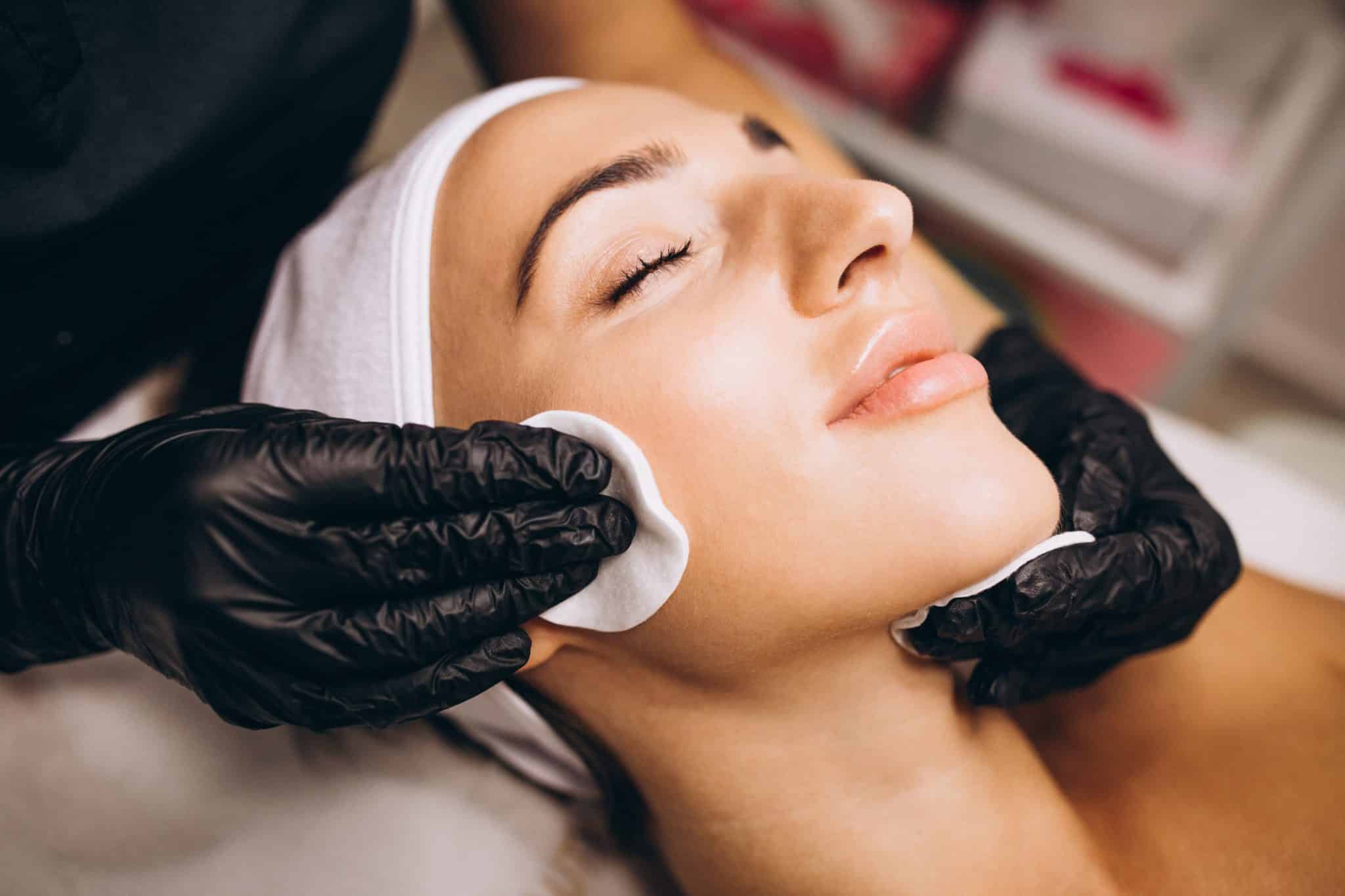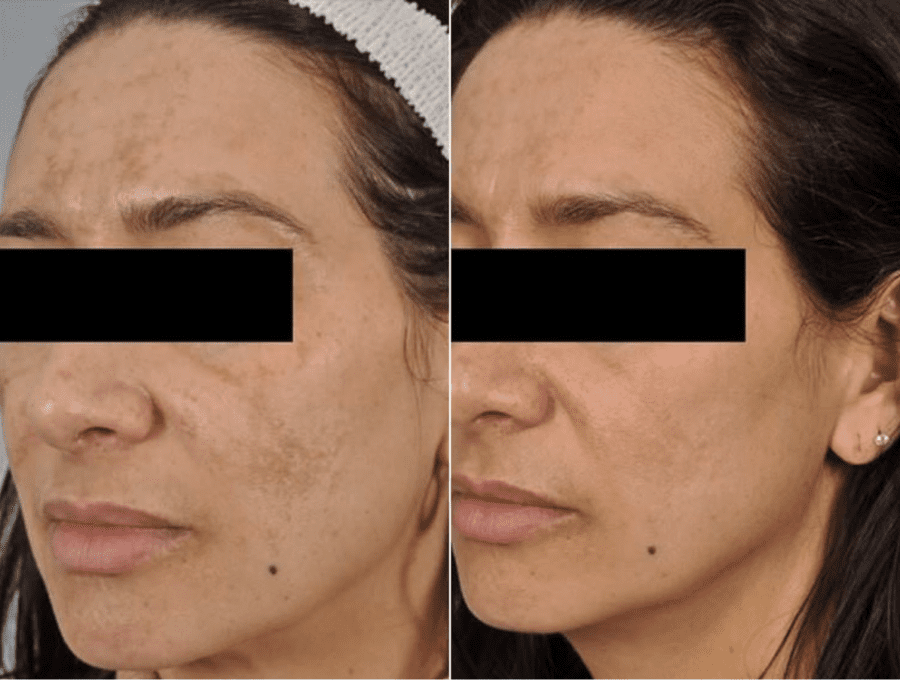
The Power of the Peel
It is said that Cleopatra used lemon juice as an agent to make her skin glow. This is the basic principle behind a chemical peel—using a weak strength acid or another compound to affect change in the skin surface. There are many types of chemical peels but in general they all work to improve wrinkles, fine lines, and can also address acne scarring and unevenness in skin tone and color along with pigment.
What is a chemical peel?
A chemical peel is a treatment designed to cause loss of the superficial surfaces of the skin. It is also known as chemo exfoliation. When the skin peels off, a new layer of skin is visible that is more compact and organized and resembles the skin of youth. Other means of obtaining a chemical peel are laser resurfacing, radio-frequency energy, derma-planing and dermabrasion, all of which remove the superficial layers of the skin, allowing the deeper layers to heal in a more organized and youthful fashion and stimulating collagen.
What conditions does a chemical peel treat?
Chemical peels are performed on all parts of the body, but are most commonly performed on the face, neck, décolletage and hands. In our practice, we have a variety of different types of peels designed for different types of issues.
What skin concerns can a chemical peel address?
- Hyperpigmentation related to the sun and the elements
- Fine lines and wrinkles
- Acne scarring
- Scaly skin and actinic keratoses
- Melasma—a hyperpigmentation primarily of the face related to pregnancy and often to birth control pills
A chemical peel can tighten the skin moderately, but does not work on changes related to gravity such as the sagging loose skin of the neck or breasts.
Are chemical peels suitable for all skin types?
Chemical peels that are extremely superficial work on skin of all types. In general, however, the deeper the peel, the more potential there is in pigmented patients for there to be pigment issues after the peel—either the loss of pigment or hyperpigmentation. For this reason, deeper peels are generally reserved for patients who have light skin that burns rather than tans. The more olive-complected or more melanin there is in the skin, the less likely it is for a deep peel to be recommended. Other reasons not to have a peel are if you have a history of abnormal scarring or are expecting to be in the sun after your peel. In these situations, sometimes we will put you on both a sun block and a depigmenting agent both before and after the peel.
42 year old woman with Melasma had 2 VI peels. Brown patches significantly lighter and tone and texture is improved.
Which type of peel do I need?
The answer is that it depends on 1 – the amount of skin damage present and 2 – the amount of downtime that you have. We can often achieve a lot with multiple medium depth peels. A superficial peel is great for making your skin glow before an event for example. These peels only target the top layers of the skin and provide a freshening glow. A deeper peel attacks wrinkles and sunspots. A consultation in our office can help you choose from among the many peels that are offered at WSkin Studio.
Are there different types of chemical peels?
In our practice, we have multiple different types of chemical peels. These are listed below. In general, there are superficial, medium depth and deep peels.
Instant Glow Peels (Superficial Peel)
In our office, we do this peel to make your skin look amazing–especially before a special occasion. After gentle exfoliation, a Super Serum—a nourishing blend of moisturizing emollients–is massaged into your skin, causing immediate clarification and brightening. A replenishing masque is applied as the final step in producing youthful, glowing skin.
Perfect 10 Peel (Superficial Peel)
The Perfect 10 Peel contains a synergistic blend of ingredients that visibly reduce the signs of aging. A blend of alpha and beta hydroxyl acids is applied as the first layer to gently exfoliate and peel the skin. Afterwards, a trans-retinal (retinoic acid) complex is applied to enhance the effects of this powerful peel treatment.
Renewal Peel (Superficial Peel)
Alpha hydroxy acids and highly purified natural compounds are used in our uniquely formulated renewal peel to stimulate and exfoliate the skin. This treatment refines the skin and reduces facial blemishes, acne, wrinkles, uneven pigmentation, and the size of pores. It can also be used to reverse sun damage.
PRX T-33 (Superficial Peel)
This peel is the newest offering. It is also very new to the United States, having been developed in Italy. It combines the chemical used in medium depth peeling with an agent that prevents peeling!! The skin is massaged precisely after the peel to deliver and hydrate. You receive the postoperative skin treatment as part of a package of 4 of these peels. This peel is perfect for events and those on the go before an event because your skin does not peel after the peel!
Cyto Peel (Superficial Peel)
CYTOPEEL (hydradermabrasion) is a non-invasive skin treatment that cleanses, extracts, as well as hydrates skin. This service has become popular because it has virtually no downtime and can improve skin glow, hydration, and radiance in just 30 minutes. CYTOPEEL is safe and can be performed on nearly all skin types and is virtually painless, with no pinching, needling, or abrasion. In fact, many patients find this facial relaxing and enjoyable!
The skin is first cleansed and gently exfoliated with customizable solutions containing vitamins, growth factors, antioxidants, AHAs and BHAs to name a few. These solutions benefits help reduce hyperpigmentation and sun damage, stimulate collagen production, fight free radicals, balance oil production and minimize the appearance of pores. Next, debris is removed from pores with painless suction followed by a proprietary spritz solution infused with growth factors and moisturizing agents to deeply hydrate and promote recovery post treatment.
This treatment is ideal for patients who have hyperpigmentation, fine lines and wrinkles, acne-prone skin, enlarged and congested pores and excessively oily skin. Patients may see noticeable skin improvements after just one treatment. However, to get maximum results, CYTOPEEL treatments should be received every four to six weeks for younger-looking, glowing, healthier skin.
VI Peel (Medium Depth)
The VI peel from the Vitality institute in Beverly Hills combines weak strength phenol (carbolic acid), weak strength trichloracetic acid, weak strength Retin A, salicylic acid and ascorbic acid (Vitamin C). This deep peel contains a synergistic blend of powerful ingredients that reverse the signs of aging and sun damage and works well on wrinkles, scaly skin, and liver spots.
Clarifying Peel With Microdermabrasion (Medium Depth)
This peel is designed for adults and teenagers with acne-prone skin. Before applying the TCA (trichloracetic acid) peel, we cleanse the skin and extract the pores. After the peel, microdermabrasion is performed to remove the most superficial layers. This effectively deepens the peel. A masque is then applied to rehydrate the skin using powerful antioxidants.
Deep Peels
The peel performed in our office for the purpose of treating deep cracks and scaly skin with actinic (sun damage) is the Hetter peel, which was described initially by Hetter and refined and taught to Dr. Wulc by Dr. Lawrence Kass. This peel, like a fully ablative laser, is useful in eliminating deep lines.
Deeper peels remove the epidermis and some the superficial dermis. These peels are performed by Dr. Wulc–or in your plastic surgeon’s or dermatologist’s office. The skin is prepped over a month prior to the peel using topical solutions.
The skin can be numbed if necessary both with a topical agent or with an injection, and sedation is often of benefit because the skin burns as the layers of the skin are denuded by the topical agents.
Aftercare is critical with this type of peel and frequent visits to our office are necessary to assure that healing proceeds as we expect.
Are there risks that come with a chemical peel?
There is a definite risk of hyperpigmentation, and scarring is extremely rare. Patients who have a history of cold sores or who have never had one before can develop an outbreak of herpes. In this situation, we almost always treat our patients with prophylactic antivirals to prevent this from happening. A keloid scar is a dreaded complication as is an infection. Very rarely, with deep peels, a scar can develop. This is treatable with certain lasers.
What can I expect after getting my peel?
The process of a peel is relatively straightforward. In the case where you have either underlying pigment in your skin or a history of cold sores, prevention is the key. In the case of hyperpigmentation—if you are olive-complected—especially if there is a deep peel, we may start you on a topical compound that slows down the production of melanin in the skin. An antiviral in the case if there is a history of cold sores generally prevents an outbreak.
The process is quite simple. We first clean your skin thoroughly with a degreasing agent to apply the peel more evenly. The chemical is then applied to the skin in one or more coats. Types of peeling agents are listed above, but generally are trichloracetic acid mixed with another solution, glycolic acid, an alpha hydroxy acid, lactic acid or phenol mixed with soap, croton oil, phenol and soap (Hetter peel). Each of these peels affects the skin at a different layer and the more coats that are applied, the deeper the peel goes. The most important element in a peel–and the art of the peel—is in getting the precise depth controlled so that the injury produces the maximum benefit. In general, the deeper the peel, the longer the healing period. Deep, deep wrinkles can even be treated with the more concentrated peels, but the recovery for these procedures is longer. A peel stings mildly while it happens, and over the days after the peel your skin exfoliates—flakes—and comes off. It is important during this period to keep the skin clean and use moisturizers.
What does recovery look like?
Immediately after the peel, your skin looks red and almost sunburned. The skin then gradually sloughs and can look like dry. It is important immediately afterwards to apply the ointments and creams that we suggest as the skin heals. In the situation that a deeper peel is performed, we prefer that you use soaks with vinegar until the skin heals. We follow you carefully during this time. ‘
After a peel, it is important to avoid the sun as much as possible and to always wear sunscreen and moisturize. Baby skin has a tendency to be damaged more than the rough skin that you started with, so it is really important after the peel to be more vigilant in your skin care.
Light peels can be repeated often to produce a more profound result.Immediately after the peel, your skin looks red and almost sunburned. The skin then gradually sloughs and can look like dry. It is important immediately afterwards to apply the ointments and creams that we suggest as the skin heals. In the situation that a deeper peel is performed, we prefer that you use soaks with vinegar until the skin heals. We follow you carefully during this time. After a peel, it is important to avoid the sun as much as possible and to always wear sunscreen and moisturize. Baby skin has a tendency to be damaged more than the rough skin that you started with, so it is really important after the peel to be more vigilant in your skin care. Light peels can be repeated often to produce a more profound result.
I want a chemical peel, where do I begin?
Dr.Allan Wulc is a quadruple certified plastic and cosmetic surgeon with 25+ years of experience and would be pleased to help you achieve your aesthetic goals. Most of the peels in our office are performed at WSkin Studio™ by our talented and experienced medical aestheticians Gina Veith and Rachel Cary. We all will be happy to talk to you about the peel that might be right for you in order to help you achieve your goals. Fill out the form below to schedule a personalized consultation or call (610) 828- 8880.


